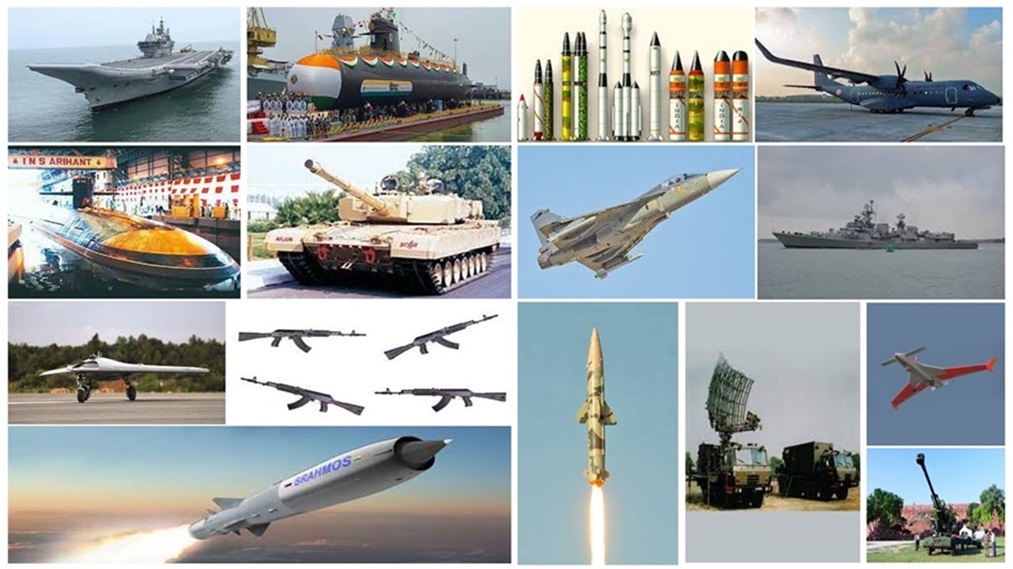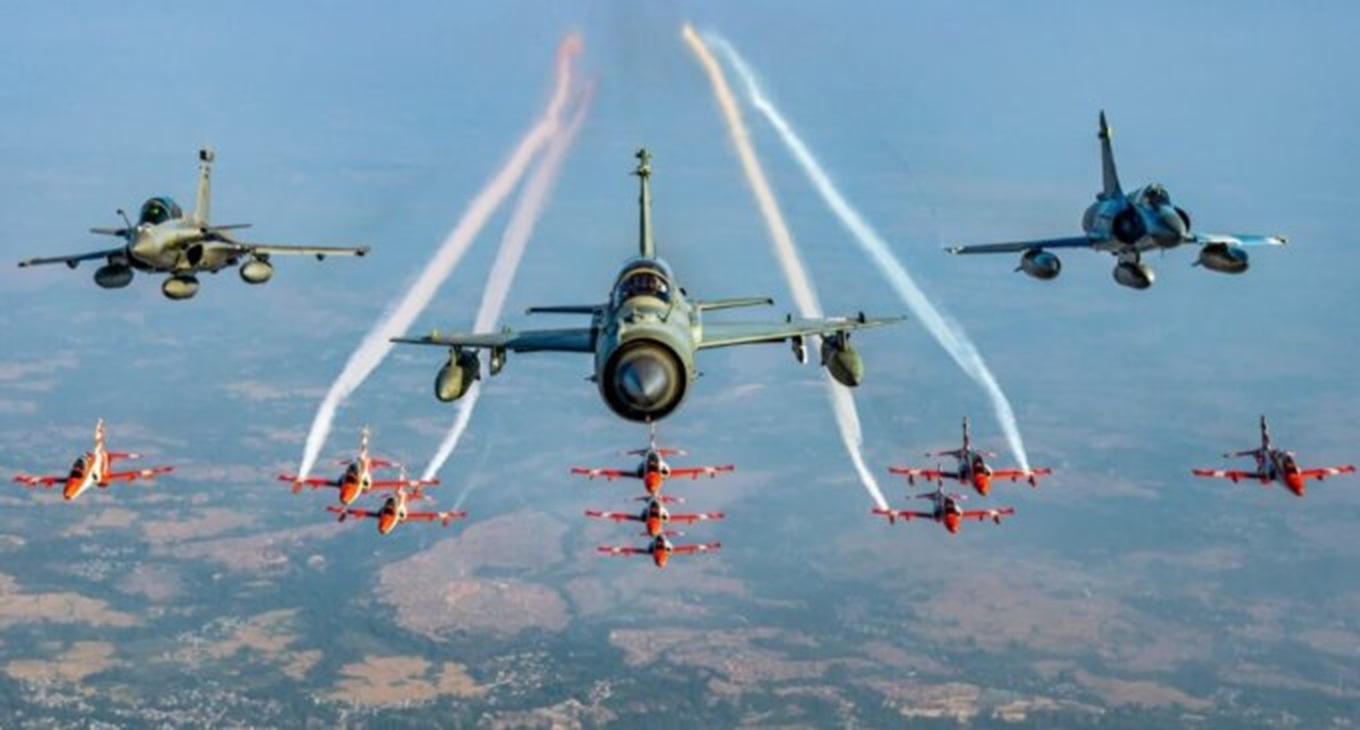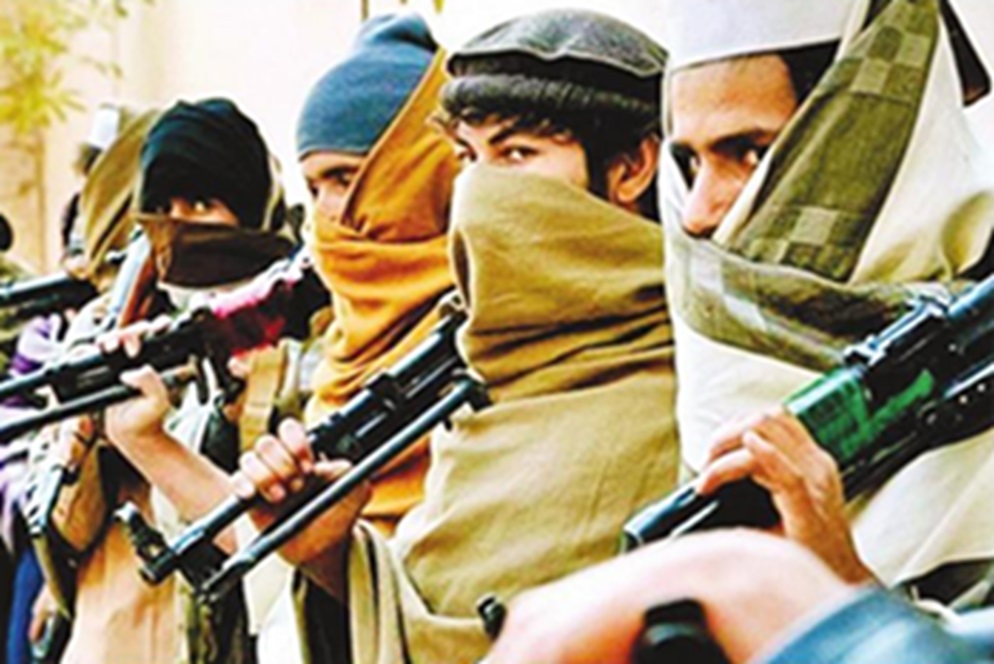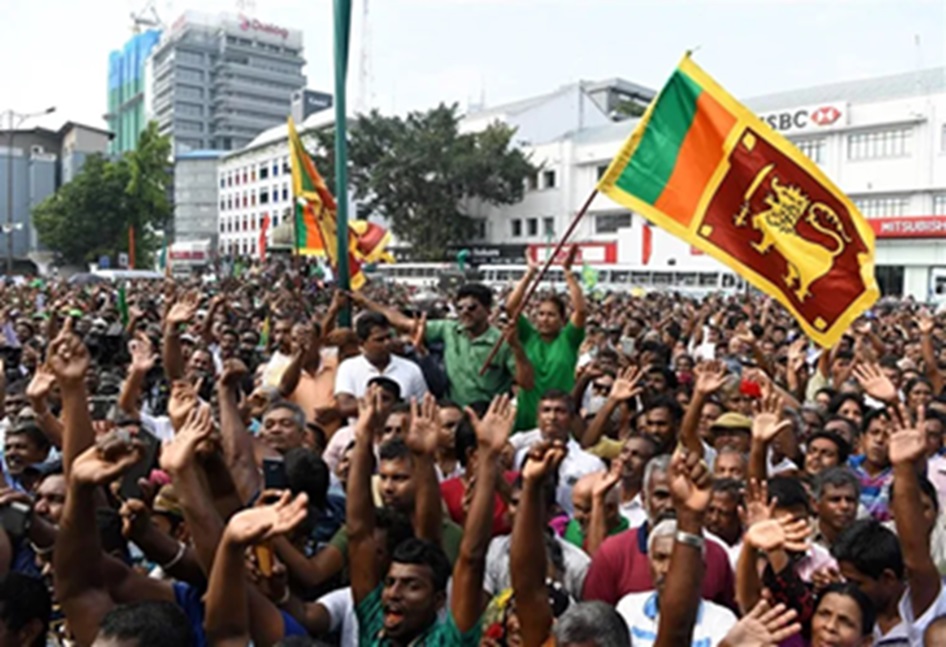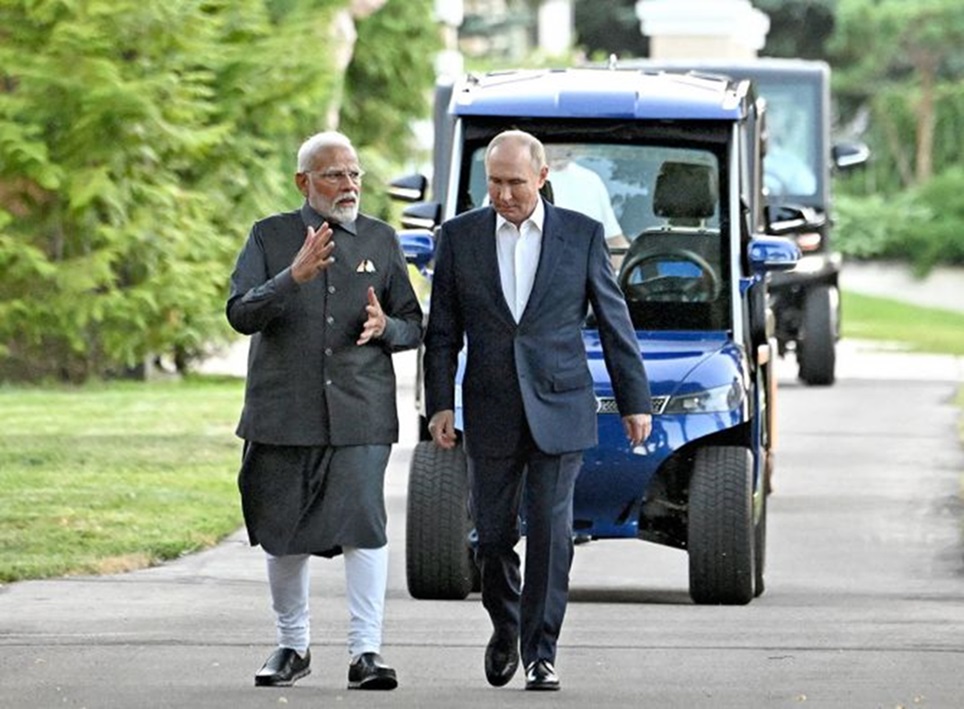The Government with a strategic focus on the India’s defence sector, aims to boost indigenous capabilities and achieve self-reliance in defence production. Military Veterans have a larger role to pay in coming years to support this endeavour.
India’s Readiness to Counter Emerging Threats
The Indian military is fast evolving and adapting to meet future challenges. The modernisation, transformation and capability building including infrastructure are well in place. Our land warfare, aerospace and oceanic domains are well empowered to ward off any threat. Yet we have a long way to go particularly in the non kinetic domain, Information Warfare(IW), and joint force capabilities which remain subpar. Also, our Professional Military Education for operational and strategic level leadership requires a recast in tune with future wars. We need a National Defence University.
Our primary external threat remains China with Pak just a subset of it. While the capability gap is fast closing, doctrinally we need to graduate from a defensive ground holding force on force to a strategy of denial, domination and dislocation. We also need to dominate the cognitive domains in the space between war and peace. China requires an integrated deterrence wherein all elements of national power are synergised. We cannot deter China effectively if we continue to allow our adverse trade balance to escalate. So we urgently need a National Security Strategy. Internally, terrorism remains a major threat with toxic ideologies flourishing. It requires a proactive and preemptive response at the grassroots level to fundamentalist ideology, toxic education of hate and sleeper cells.
Wars have taken a different flavour blurring the demarcation between war and peace. Similarly, battlespace has extended to society. Today it’s hot peace and cold war. Contemporary wars are more about ideas, influence, ideology, powerplay and disruptions. The notion of victory remains a narrative not necessarily the truth. Ukraine and Gaza are witnessing techno-defined warfighting with Drones, C5ISR, Cyber Warfare, AI, IW and other disruptive technologies besides new players like mercenaries and proxy players/nations. It’s an era of precision unmanned warfare as witnessed in the recent strikes by Iran on Israel. There are many lessons which we need to selectively relate to our operational environment. An important lesson remains indigenous war endurance and stamina in the never-ending wars of today. The answer lies in both self-sufficiency and self-reliance as part of Atmanirbharta’s journey to our destination of Viksit Bharat@2049.
Priorities for India’s Military Modernization
We need to prevail in the present and be prepared for future wars. Ironically, we are preparing not only for the last war but also for the wrong war. We are well-trained at the tactical level but not well-educated at the operational and strategic level of warfare. Thus, doctrinally we need to re-orient our restructuring philosophy from a threat cum capability building to future capability building. We must overcome the legacy defensive mindset, status quo culture and bureaucratic cobwebs. We need techno-warriors and thought leaders who not only adapt but are agents of driving the change. We must address three critical strategic components of military transformation – transformed politico-military culture, transformed defence planning process and transformed joint service capabilities through supportive budgetary allocation and matching indigenous reforms. Future threats will manifest with a multidomain grey zone character aimed to embarrass and weaken the nation and its aspirations. Cyber, space, information, trade, society and finance have all become an inseparable part of future conflicts. Non-kinetic and kinetic domains are only an integrated construct of this warfare. The reality is that hard power remains indispensable both for deterrence and warfighting to pursue national interests in a zero-sum world. Doctrinally we require a space to surface to ocean continuum for an operational third dimensional manoeuvre and strategic dislocation. The vertical component must include high altitude long-duration UAVs, UCAVs and airborne cum space satellite systems for ISR, SATCOM and PNT. It’s an era of precision warfare and stand-off capability generation. While MIRV Agni 5 has been a game changer, we need to invest more in Anti-Ballistic Missile and anti UAV capabilities. We need to graduate from Jointness to Interdependence. The level of interoperability and complementarity between land, sea and aerospace must achieve the desired speed, economy and operational acceleration. We also need to enlarge the scope and give high technology capabilities to the future combined arms teams operating in a joint force environment. We also need indigenous technology empowerment. The requirement is for knowledge-based, decision-oriented and technology-empowered lean and agile forces to execute missions faster and with greater effect.
The core operational goals of force restructuring must include :–
- Rapidly deployable, lethal, survivable and manoeuvrable (Joint and Special Forces) with sufficient combat effectiveness.
- Networked organic C5ISR systems.
- Stand-off strike capabilities, and PGMs.
- Dominant Battlespace Awareness and Decision Dominance of the OODA loop.
- Modular and scalable organisations with flexible command architecture.
- Desired intrinsic operational reach and endurance.
- Thought leadership and empowered human resources with offensive orientation.
India’s Current Strategic Partnerships and Alliances
Strategic relationship is a dynamic manifestation of the geopolitical environment and strategic security challenges in contemporary times. India’s centrality remains the quest for a Eurasian power with strategic military and economic ties with Russia, engagement to manage China and strategic partnership with the USA both as a counterweight against China and for its strategic autonomy aspirations. Russia enjoys a special position in India’s national interest vital for India’s defence posture, trade, and energy resources. Besides, Russia traditionally has provided consistent support to India at UN and other international forums. However, the newfound bonhomie between Russia and China and their estrangement with the USA poses complexity for India to balance the three in its foreign policy standing. Russia-China relationship warming up presents challenges for India in the depth of its strategic relationship with Russia. As China’s belligerence and revisionism manifest both in the Himalayas and Indo-Pacific, India has thus enhanced its political, diplomatic, economic, and military ties with the United States to meet its national security interests and bridge the asymmetry with China. Simultaneously, India’s neutral stance in the ongoing Russia-Ukraine war indicates its delicate balancing of Russia and US relationship in pursuit of its national interests without antagonising either. It is also indicative of India’s efforts to secure its place in a multipolar world and leverage both Russia and the US as a vital counterweight to China’s growing assertiveness and bridge the asymmetry between the two. Accordingly, the US also believes that it would be unrealistic to divide the Russia-India relationship, as a weakened Russia would be drawn closer to China which would be neither in the interest of India nor the USA. India thus sees an opportunity to engage both with Russia and China bilaterally and through several organisations like RIC, BRICS, SCO etc. Simultaneously it continues to strengthen its relationship with the USA to a new strategic level both bilaterally and through organisations like QUAD, G-20, JAI etc. The quest is to find the sweet spot of geopolitical opportunism and strategic balancing to leverage India’s trajectory at the global and regional levels. Thus, maintaining strategic defence cum trade ties with Russia leveraging partnerships with the USA for its vital national interests, and engagement to manage China, gives it the role of a Eurasian power contributing to strategic stability and global peace. These partnerships also help to empower India’s quest for self-reliance and self-sufficiency as they empower the domestic players for indigenous solutions and advanced technologies. Yet, the rise of India will increasingly face challenges and competition from all those whose applecarts are being upset. Thus, resilience and steadfast focus on its rightful trajectory overcoming challenges without confrontation will be the key. We must reduce our dependencies on others and in fact, create dependencies on us for future growth and stability.
Strategies to Adopt for Safeguarding Maritime Interests
In recent times we have seen a geopolitical shift from the Euro-Atlantic to the Indo-Pacific region impacting the political, security and economic contestation, particularly in the Indian Ocean region. This has impacted India’s maritime concerns and future challenges. The shared common vision of the nations in the Indo-Pacific is safeguarding freedom of navigation, upholding international laws, (UNCLOS) and peaceful resolution of maritime disputes. The major concern is China’s hegemonic behaviour and coercion with incremental control of islands and expanding EEZs. This challenges the rules-based order and has given rise to several bilateral, regional, and global initiatives with common security and economic concerns. India faces the imperative of monitoring and addressing Chinese encroachment in its immediate maritime periphery, notably in locations like Coco Islands in Myanmar and Hambantota in Sri Lanka. Tensions arising from India-Maldives relations and the burgeoning defence ties between China and Maldives underscore the challenges within the Indian Ocean region. Maldives endorsement of the Chinese maritime Belt and Road Initiative (BRI) has catalysed Chinese influence and presence in IOR. However, the Hambantota port and the Maldives are presently more of a commercial engagement than developing a military base or infrastructure. Yet these need to be monitored for future military overtones. India will have to adopt a nuanced and pragmatic approach based on a model of partnerships with a focus on common economic benefits and strategic security. Given the overwhelming impact of the Chinese navy, the Indian Indo-Pacific policy must follow a two-pronged policy on Maritime Domain Awareness capabilities and expansion of naval capacity. Considering our current assets and our commitments, we should limit our area of interest to the Indian Ocean region (Strait of Hormuz to Malacca straits). The ambition of becoming an extra-regional power or following the doctrine of power projection must be kept on hold presently. Consequently, India must engage proactively with stakeholders in the Indo-Pacific through platforms such as the Indo-Pacific Economic Framework (IPEF) to articulate its concerns and forge partnerships of both economic significance and military deterrence. Moreover, India must recalibrate its approach in the immediate neighbourhood to pre-empt any adversarial manoeuvres by China aimed at undermining India’s regional and global standing.
Leveraging Position at the UN Security Council
India has consistently voiced the need for holistic reforms for the United Nations Security Council (UNSC) which reflect the realities of the 21st century. A more inclusive and enlarged composition is mandated for both its permanent and non-permanent membership tiers. This would represent the aspirations and concerns of the Global South and the evolving geopolitical landscape. India’s geopolitical standing and global stature bolsters its case for a permanent seat on the Security Council. As the world’s largest democracy and fastest-growing economy, India’s inclusion would infuse a wider perspective in decision-making and ensure a more balanced distribution of power. India could play a major role in critical global issues and foster regional stability and shared growth through conflict resolution and dialogue. India champions the cause of a more inclusive UNSC against the present unilateralism and disregard by its members, thus fortifying multilateralism and more inclusive decision-making. This aligns with the foundational principles of the UN Charter. India’s quest for a permanent seat on the UNSC as a peace shaper of global conflicts is integral to its foreign policy agenda, driven by its vision for a rules-based international order and robust global security governance. With a rich history of serving on the rotational Security Council seat, India has a proven track record of strategic significance, demographic vitality, financial support, and troop contributions to UN peacekeeping efforts. It would have wide acceptability worldwide except for its regional inimical neighbours China and Pakistan. Thus its inclusion.
World Leadership on Critical Issues
We live in a world of transition. The only order in this world is durable disruptive disorder. The 21st century is a century of mind and transformation. The mind is igniting yesterday’s fiction into ideas for non-linear disorder. The transformation is creating disruptions of unknown magnitude weaponizing all instruments of national power. In such an environment international relations and liberal international order are no more a linear trajectory but it’s all about slants and crosses. There are both divergent and convergent national interests at the same time between nations making the relationship complex and issue-based. So the art of international relations in the 21st Century is to leverage geopolitical opportunities for the furtherance of national interest and the science of international relations is to decentralise globalisation. However, increasing global fragmentation and realignments in the international partnerships system create overlapping challenges of traditional and non-traditional threats at the regional and global levels. It will also broaden the gamut of opportunities and challenges for India’s strategic security calculus. The world is also seeing a transition to a multi-alignment world order shaped by the intensification of competition for resources and markets to secure strategic connectivity with overlapping and often conflicting interests. While the debate is on bipolar and multipolar world order, the truth seemingly is unfolding in multiple directions of multialignment. On one end of the spectrum, it continues to be largely state-centric concerned with the structures of the balance of power, polarity and collective security. At the other end is a widening agenda of multiple orders, which encompasses a new trade order, new energy order, new financial order, new economic order, new environmental order, new human rights order etc. So it’s not the model which is important but its elements which will determine not only war and peace but also the future stability of global energy, food security, global supply chain, financial system, environment security, health care, human rights etc. The coalition of democracies versus autocracies has faded away to multiple engagements driven by national interest. The 21st-century Globalisation 2.0 will have a lot more variables and participants promoting decentralised approaches to global cooperation. Thus it will be a more inclusive model. India is the world’s fastest-growing GDP economy and fast emerging among the top nations in many development spheres. Its large and diverse market, the highest number of start-ups, coupled with a youth bulge as the most populated country, make it an attractive destination for global trade and investment. India has strategic partnerships world over in more than 30 countries by deepening bilateral ties and promoting convergence on issues of mutual interest. India has also been a founding member of the World Bank and the IMF and is associated with several international groups, including BRICS and SCO. Yet India does realise that there are no permanent friends in the global arena beyond shared interests. So, the imperative of the destination of strategic autonomy. India’s leadership role in the recent G20 and Indo-Pacific coalitions makes it a strategic balancer and influencer of global peace. There are no more weak or ambiguous signals by India even to major powers. India speaks from a level of moral authority and the world acknowledges us. India’s foreign policy is balanced with clear strategic indicators without hypocrisy in pursuit of its national interest and values.
Role on Resolving International Conflicts
Of approximately 194 countries in the world, nearly half are experiencing some form of war. There are nearly 32 ongoing conflicts. This is de-facto WW3. There seems to be no conflict resolution in these never ending conflicts. The rules-based world order or international humanitarian law does not exist anymore. The 20th century archival global mechanisms like the UN, essentially the leverage of a chosen few, have failed to transform with time in modulating global peace and international norms of behaviour. The inability of conflict resolution in ongoing conflict worldwide especially in Russia -Ukraine and the Israel-Hamas is a testimony of its impotency. The USA’s brand of exceptionalism leading to multiple unilateral interventions, Chinese belligerence and incremental expansion, and Russia’s Crimea and Ukraine War have illustrated that the idea of a global ‘rules-based order’ of international governance is based on inaccurate assumptions. It is not the law that regulates the powerful but the powerful dictate the law. They leverage their veto powers to stymie any regulation contrary to their interest. Reversing the global tide of authoritarian nativism requires the legal systems to be transformed and be more inclusive to the cause than the exclusive domain of the chosen few. India as an emerging global rule maker than rule taker as also the voice of the Global South is most well placed to be a part of the Security Council. The question is not why but when. Nations inimical to its regional and global stature like China will oppose it but will be a minority. Its peaceful rise as the fastest-growing economy in the spirit of ‘Vishwa Mitra’ and ‘Vasudhaiva Kutumbakam’ has a high level of global acceptability and respect. Thus, India is most well placed for contributing to peace, stability and shared growth as also addressing global common threats like terrorism and climate change.
Role of Veterans
Veterans by being soldiers for decades can immensely contribute to nation-building. They have the qualities of character, commitment, camaraderie, loyalty, integrity and compassion. Their leadership skill, strong work ethics, man management, core values, discipline, ability to overcome stress /adversity and technical skills make them valuable assets to any organisation. They bring knowledge, experience and unique perspectives to contribute to the organisation’s growth. Ironically they remain underutilised by the nation and society. Most veterans retire at an early age so can contribute for longer periods. Approx. 75000 military personnel retire every year. However, veterans often have constraints in their post-military careers, as they are typically confined to positions related to security, administration, and facilities management. This limitation arises from employers’ inadequate comprehension of military organisational structure and the valuable skills acquired by veterans. The senior veterans by having risen in a very strict pyramid structure are experienced leaders who can as advisors or experts to Govt, the public sector and the private sector be of immense value. Their specialisation and expertise in selective roles must be utilised by the nation. This requires a coherent veteran benefit and transition act like the US – Uniformed Services Employment and Reemployment Rights Act (USERRA) which is missing today and if informally existing is underutilised. Ironically the recent politicization of the military has led to the parochial selection of veterans for post-retirement avenues beyond merit. A veteran’s greatest desire is respect and status in society due to him for all his sacrifices in uniform. It’s payback time for a grateful nation whose compassion and actions are reflected in the care and welfare of veterans and families of fallen soldiers. There is a need for a better outreach model with greater compassion, respect, empowerment and assured lifetime connectivity to address all concerns expeditiously, than just the release of monetary dues. The evolution of a large number of NGOs supporting this noble cause is welcome, but also reflective of the state’s failing to meet their vital obligation. The mantra should be to connect, show compassion, take care, and empower our veterans and the families of our fallen soldiers.
The Govt in power must endure the following for the soldiers:-
- Arm him to fight, win and live to fight yet again.
- Ensure his status and dignity in the society.
- Keep the Institution apolitical and secular. Curb its Unprofessional Exploitation.
- Institute Defence Reforms to be ready and relevant for the future. But not reforms that have a political agenda and lack focus on operational preparedness.
- Focus on macro-level strategic aspects like the National Security Strategy and National Defence University rather than myopic superficial Indianisation of military norms and dresses.
- Respect, care and wellbeing of Veterans and Families of our Martyrs / Fallen Soldiers / Disabled Warriors.
Summing up, I would draw attention to what Chanakya’s advice was to Chandragupta Maurya:- “The day a soldier has to demand his dues will be a sad day for Magadha. From then on you have lost all moral sanctions to be king”
Disclaimer: The views and opinions expressed by the author do not necessarily reflect the views of the Government of India and Defence Research and Studies


